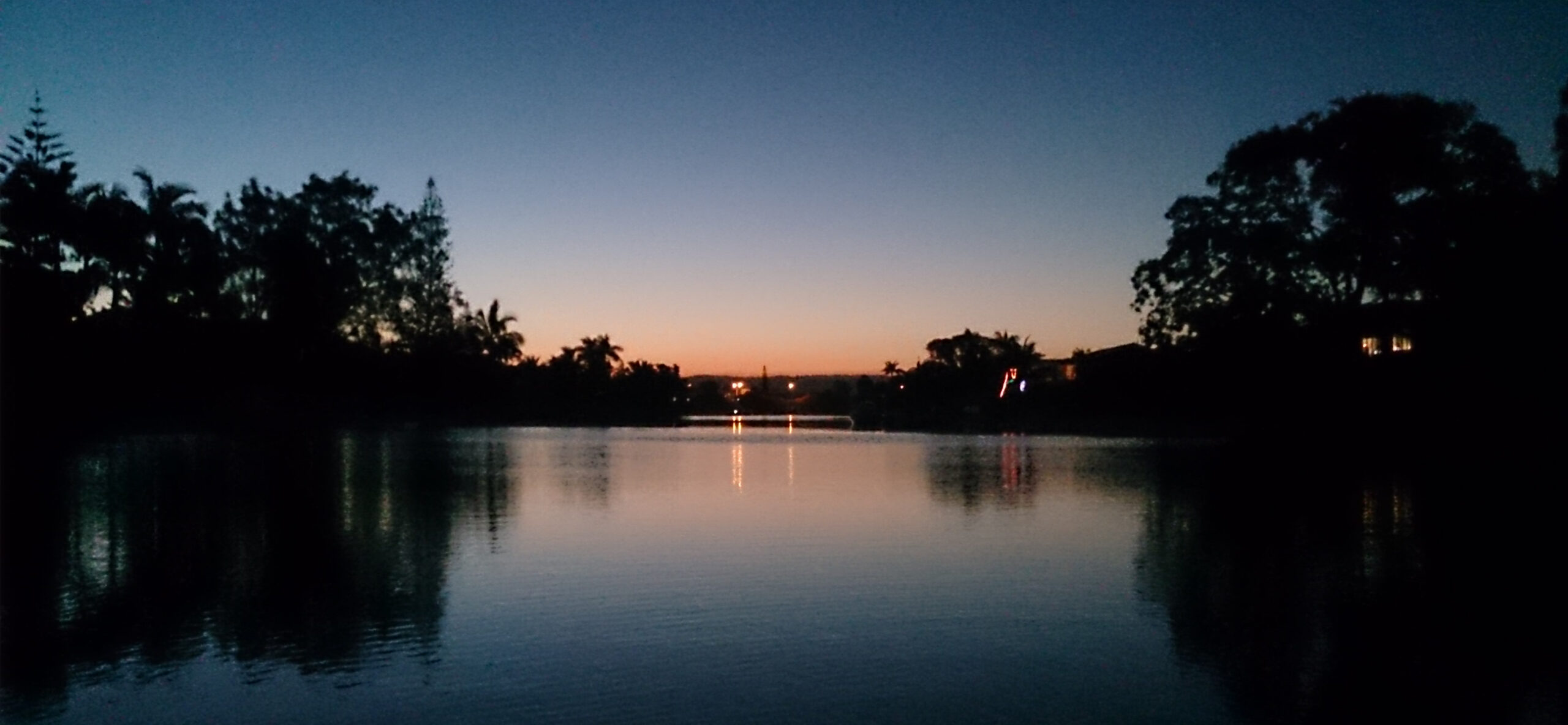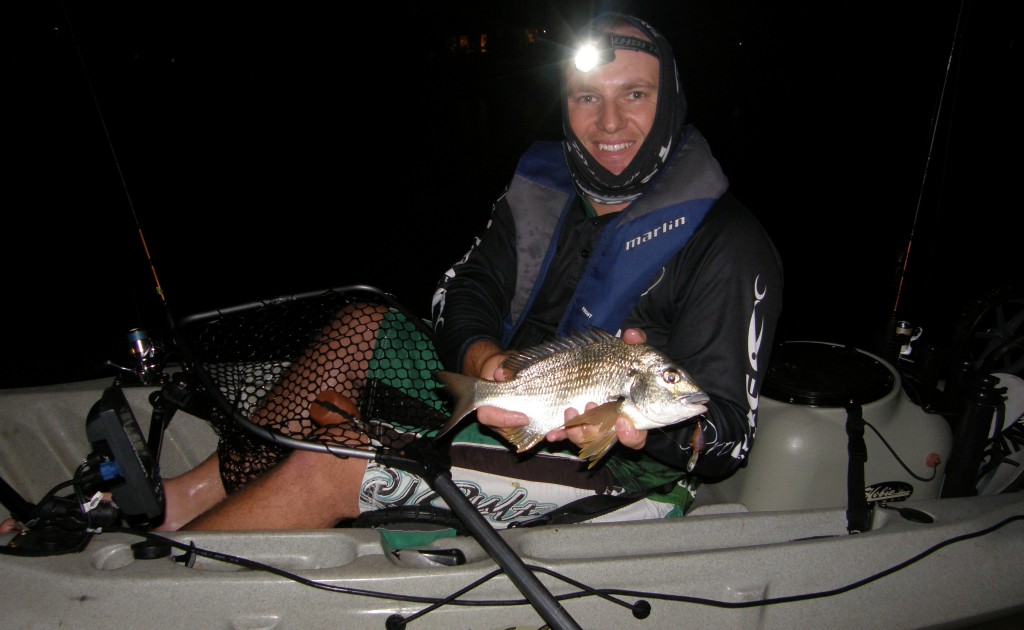Night time lure fishing for Bream, with Michael Halliday
Bream fishing after dark is generally reserved for the bait brigade. While there are plenty of lure anglers who have tried casting lures in the dark hours, there are indeed very few punters who will regularly ‘crank after dark’. Like most of you, I am sure, work and parenting duties command the lion’s share of available time. Fishing the evenings became the only way to ensure enough hours on the water to adequately satisfy my passion for casting lures at Bream. I happen to be one of those trail blazing few who regularly cast lures at Bream in the glow of a billion stars. What’s more, I’ve been at it for a few years now and learned a thing or two.
As with all styles of fishing, you never stop learning. Although this is not the first time I have written about this style of fishing, nor am I the first or only person doing this, a few changes have crept in to the way I approach a night on the water. This article is about sharing my experience with the hope that more newbies will embrace the practice, and that regular practitioners will be able to compare and contrast my techniques with their own.
My home turf are the Gold Coast Canals. They are perfect for this style of fishing with endless sandy banks and thousands of hungry bream foraging for an easy meal. I have also had night sessions in Lake Macquarie and Moreton Bay with just as much success. It’s worth noting that technique will vary with the terrain you are fishing.
I fish from a kayak so the fishing can be quite hectic at times. The quantity and class of fish can vary significantly but it is always very rewarding. A quick note of warning however. For those who intend to night-fish the Gold Coast Canals from their kayaks as I do, beware. There are toothy creatures lurking that you need to be mindful of-namely Bull Sharks. These nasty thieves are happy to knock your fish off. I’ve lost as many as four fish in a session so their presence is always in the back of my mind. So long as you remain in tune with your surroundings the water will generally tell you if there are predators lurking. Be sensible, and don’t dangle your hands and feet in the water.
My Weapons of Choice:
You need to be really comfortable with your setups if for no other reason you simply can’t see that well. You want to avoid turning your torch on every few minutes to fix tangles. I still carry 2 rods. However, rather than 2 identical setups for quick change up when things go sour, I carry a 2004 Daiwa Caldia with 3lb straight through Unitika Silver Thread fluorocarbon that is strapped to a Samurai 203 for that softer action, when pulling hooks becomes an issue. This is pretty standard for cranking. Essentially, what you use at night is the same as you use during the day. My other outfit is a 2004 Daiwa Luvias with 6lb SAS Braid ended with 6lb fluorocarbon leader. The reel is mounted on a Nordic Stage Sharpshooter. This outfit is a little more versatile as it allows you to have greater control if you need to vary the action of the crank. Leader strength doesn’t seem to put fish off at night, for obvious reasons, even when there is a little phosphorus or “fire” in the water.
My Techniques:
I have really honed my arsenal of techniques to suit the variations I encounter from system to system. Regardless of variations however, I can honestly say, where you can maintain contact with the bottom, 99% of the time you will catch more fish. Pro Lure D36 Cranks are perfect for the canal systems on the Gold Coast. They track nice and straight, maintaining their strong action while dozing the sandy edges of the canals. A slow steady retrieve, as slow as you can go whilst maintaining action and contact with the bottom, is generally the most productive, as the bream can track the lure comfortably before striking. However, during a recent outing with a visiting friend from Lake Macquarie, this methodology all went out the window. Although we found we were getting the bumps in the canals, the fish weren’t loading up as usual. We tried a little scent, which didn’t work. We then tried mixing up the technique while still maintaining the slow constant retrieve. I used the faster action of the Sharpshooter to impart a bit more action on the crank. This came up trumps for this session and the following night it was back to the slow constant steady retrieve. This demonstrates the similarities of day time and night time cranking but how subtle changes in technique can be the difference between converting and munching on a doughnut.
Here on the Gold Coast I target the open banks of which there are miles and miles. I tend to avoid the jetties and pontoons. The reason for this is that the bream tend to spread out chasing all types of crustaceans along the edges of the canals. It is not uncommon to see bream with their backs out of the water with whatever it is they are trying to eat pinned against the bank. I avoid the jetties and pontoons because the last thing you want to be doing is untangling your lure from someone’s pontoon or crab rope. The locals can get a bit cranky when they see headlamps flashing around their property.
Moreton Bay and Lake Macquarie are very similar with a lot of weed and broken bottom. This really draws on your knowledge from day time fishing and you need to pick your lure depending on the depth of water to avoid fouling up your hooks. The Pro Lure S36 Matt Black really comes in to its own in these areas. Again you want to look for areas that fish will likely move using the benefit of the cover of darkness to feed. Do your reconnaissance on these areas during the day then return in the stealth of night to reap your rewards. The slow constant retrieve really excels in these areas. Your lure is most likely running clear of the bottom and the fish is zeroing in, initially, on the vibration of the lure.
The take is generally very subtle. The fish will track the lure picking at it at times. When they are in this mood, trebles can fall victim to the bream’s oyster crunching mouths so make sure you have spare lures and trebles on hand.
My Theory on Lures:
Pro Lure D36 in Brown Gill, Tiger Shrimp and Violet are my go to colours here on the Gold Coast. Peach and Matt Black also rate well on their day. In my experience, colour does make a difference at night and more so than you might think. The Gold Coast Canals are fairly well lit so your traditional black or solid colours don’t tend to work as well most of the time. In saying this, the darker it is, I’ll tend to go more solid in colour as I do in Lake Macquarie and Moreton Bay. The Tiger Shrimp D36 is a great all-rounder as it is solid enough on top to give you nice contrast yet the more transparent base provides a little contrasting flash with the lights. My theory, built from my own discoveries and from discussions with more experienced anglers, is that a lures transparency makes it appear smaller to the Bream, therefore, is assessed as a much easier meal. Don’t be afraid to mix it up, experimentation is critical to discovering effective techniques. Most importantly, as we all know, it is the hours spent on the water that really makes the difference when learning to fish.
Night cranking is incredibly relaxing. There’s no blazing sun, it is generally much more peaceful and quiet and, most importantly, the fishing can be outstanding. Over the last few months I have blooded some new night fisher folk and to say they loved it would be an understatement. If you enjoy cranking during the day you’ll almost certainly love it at night.



